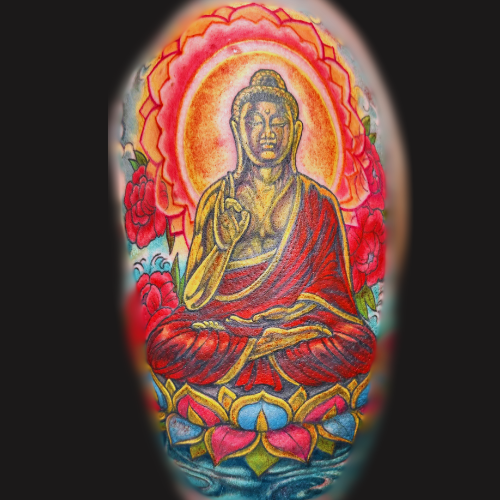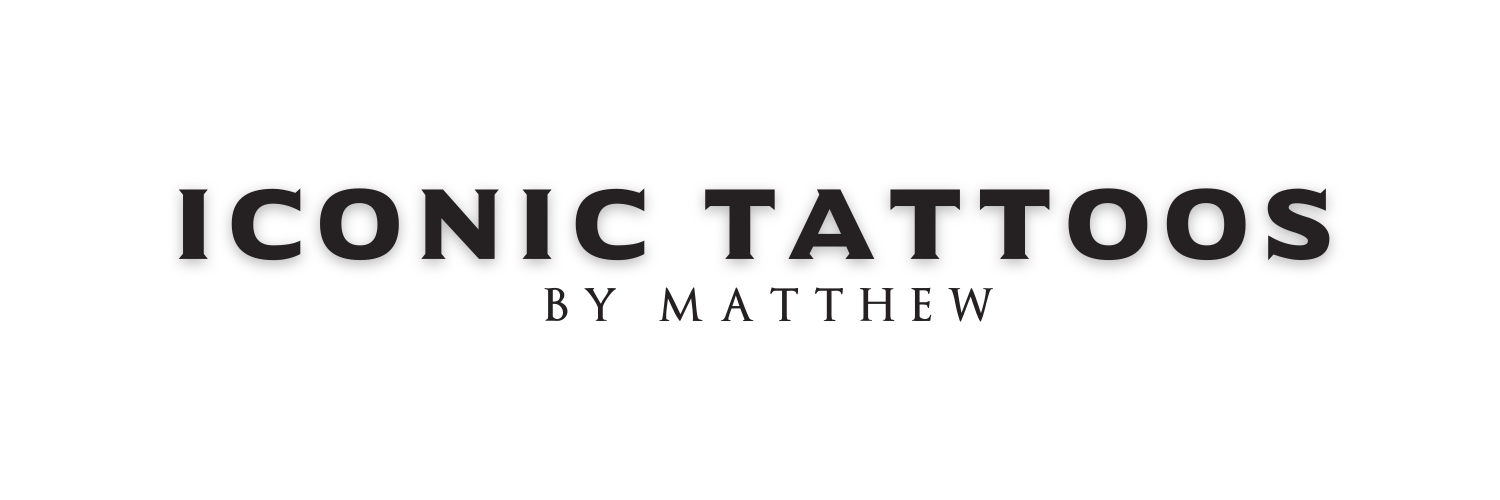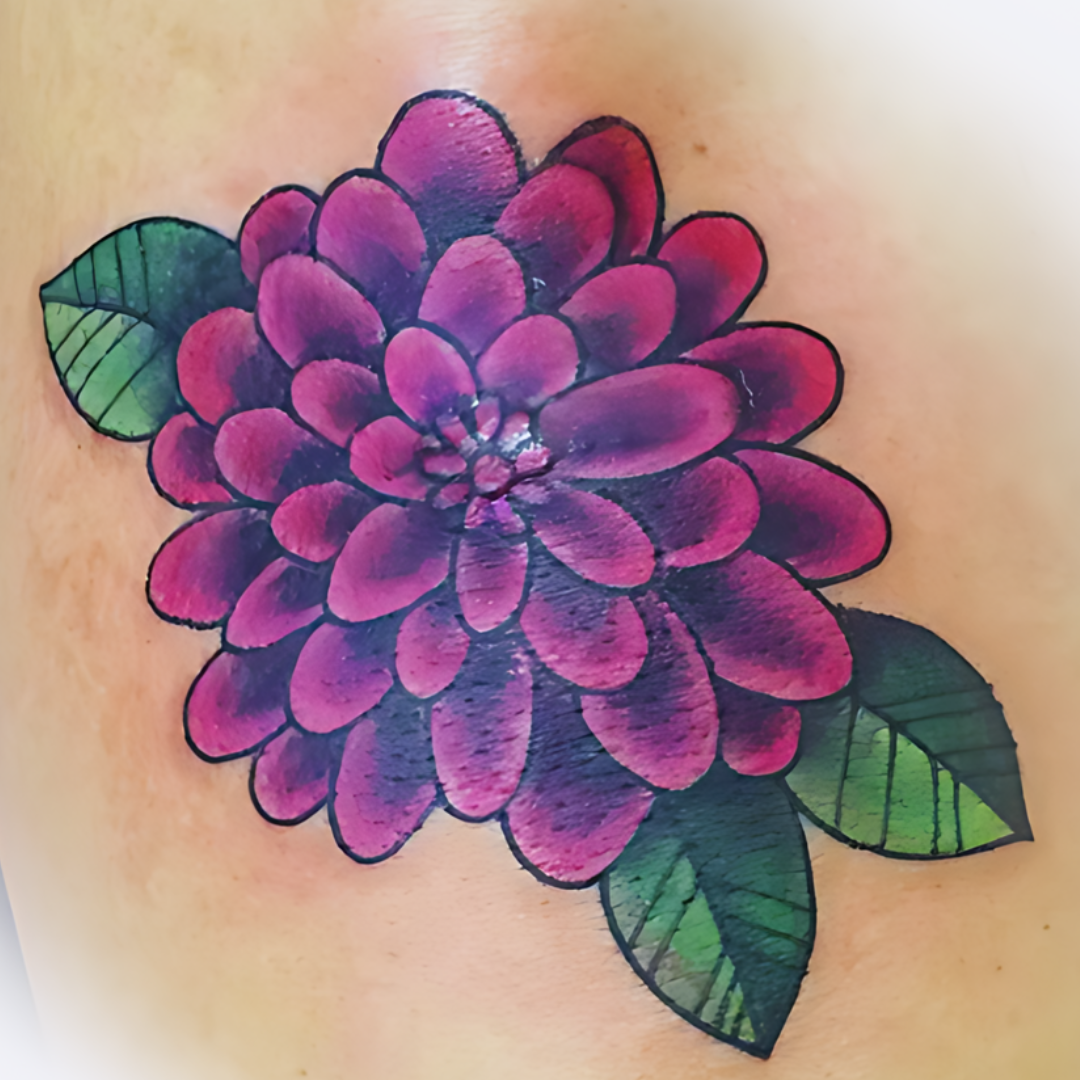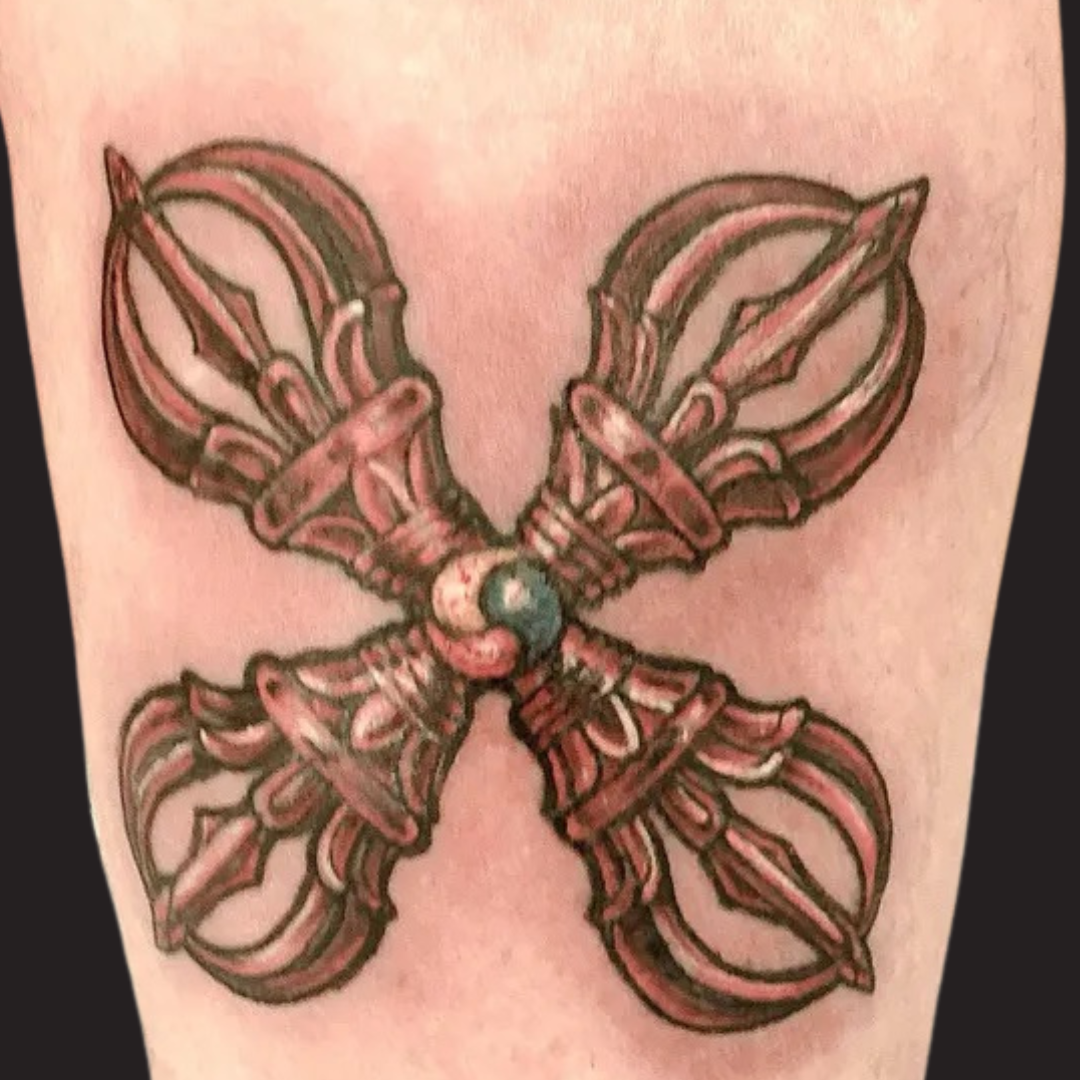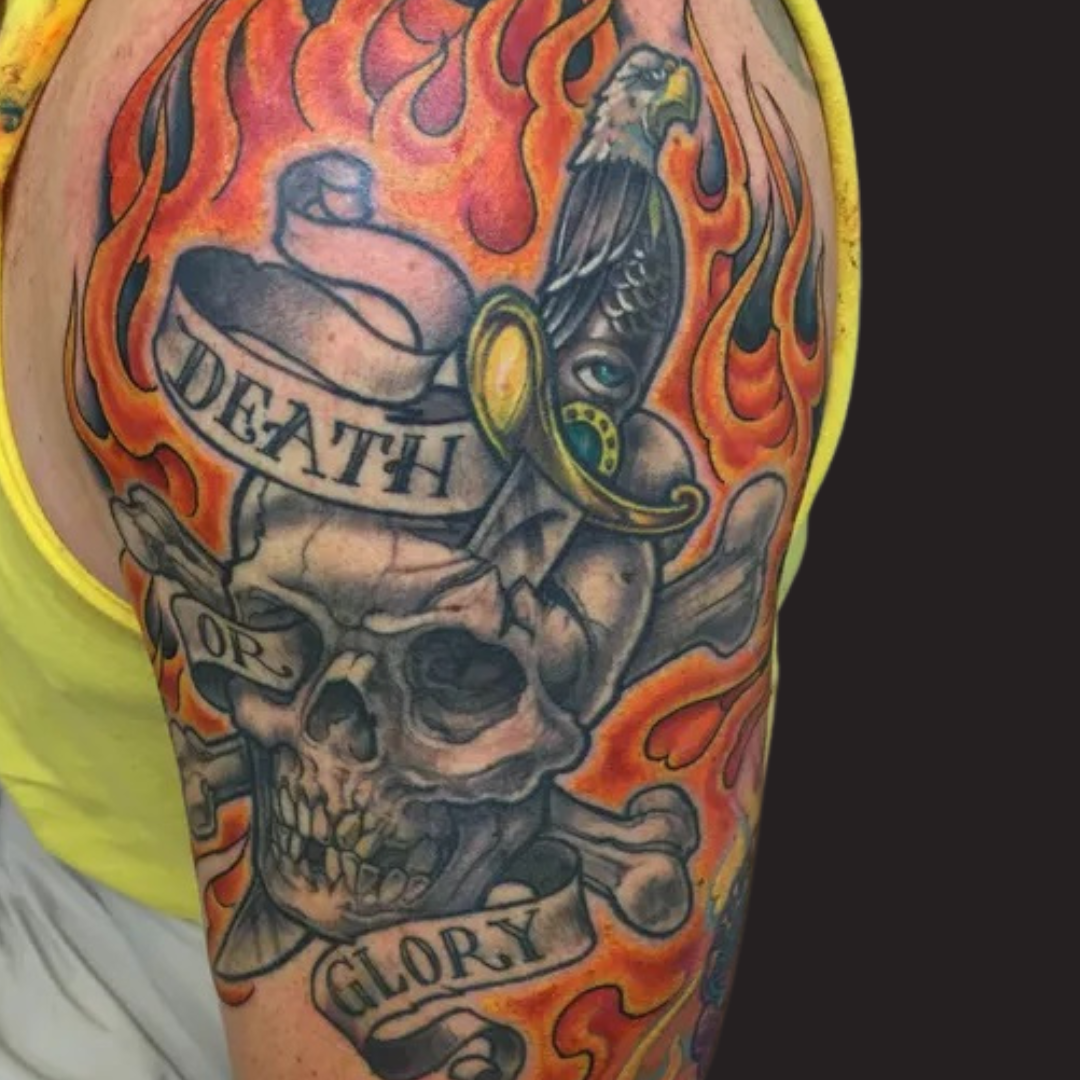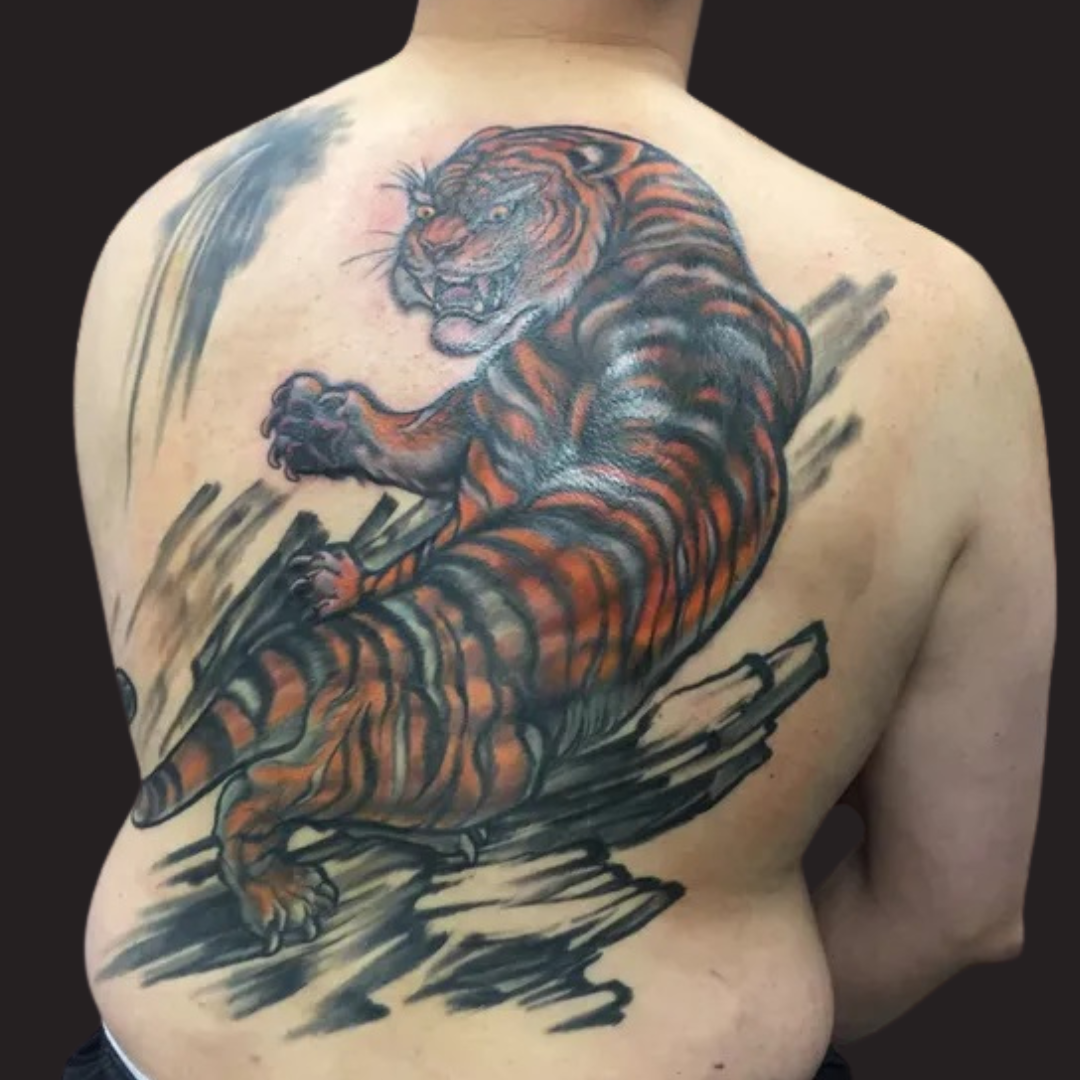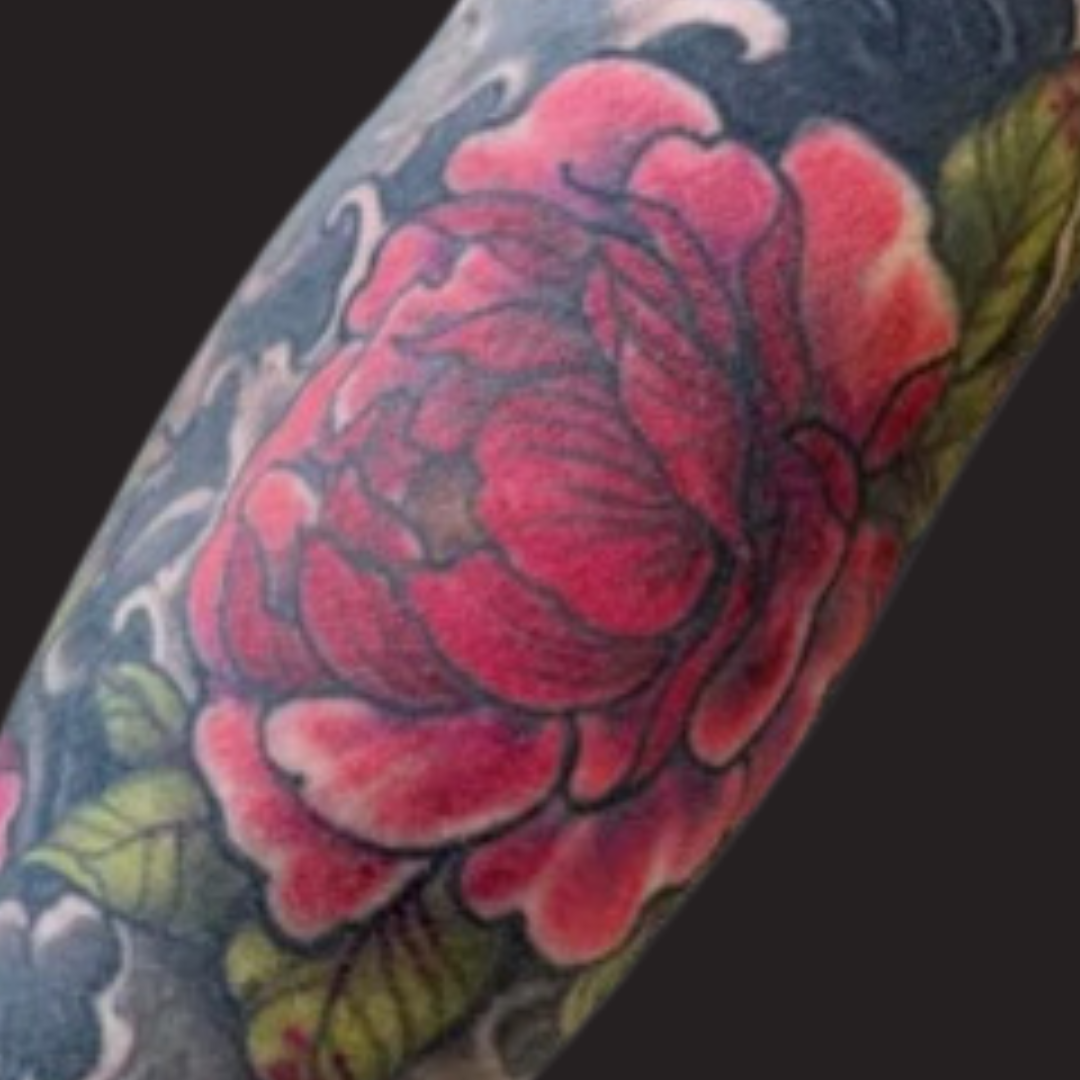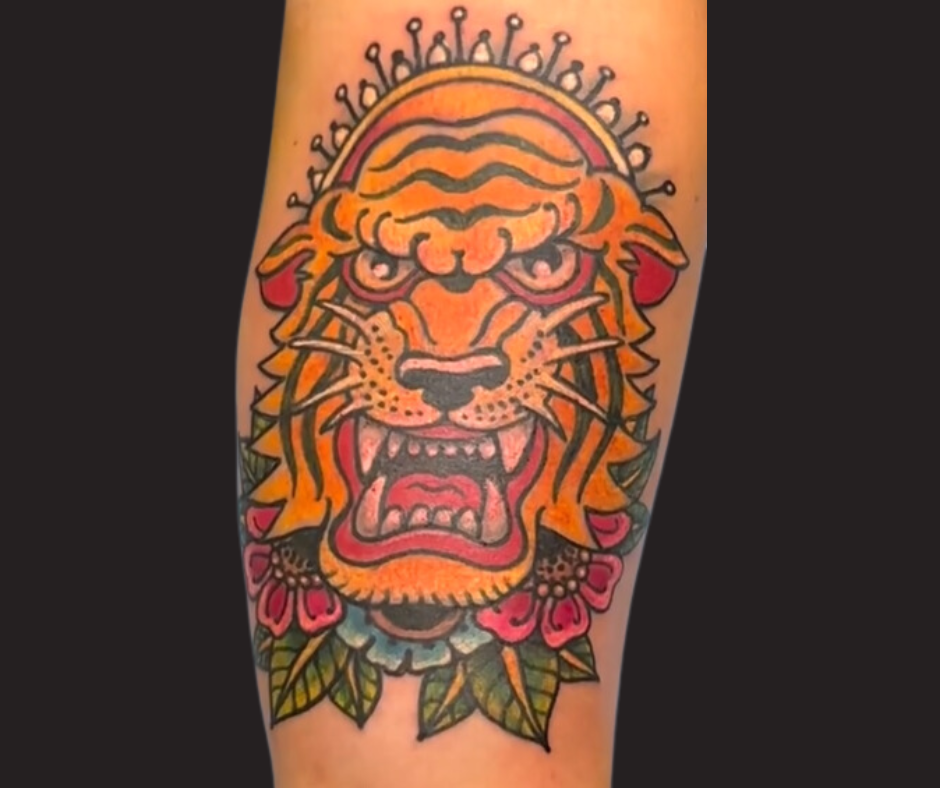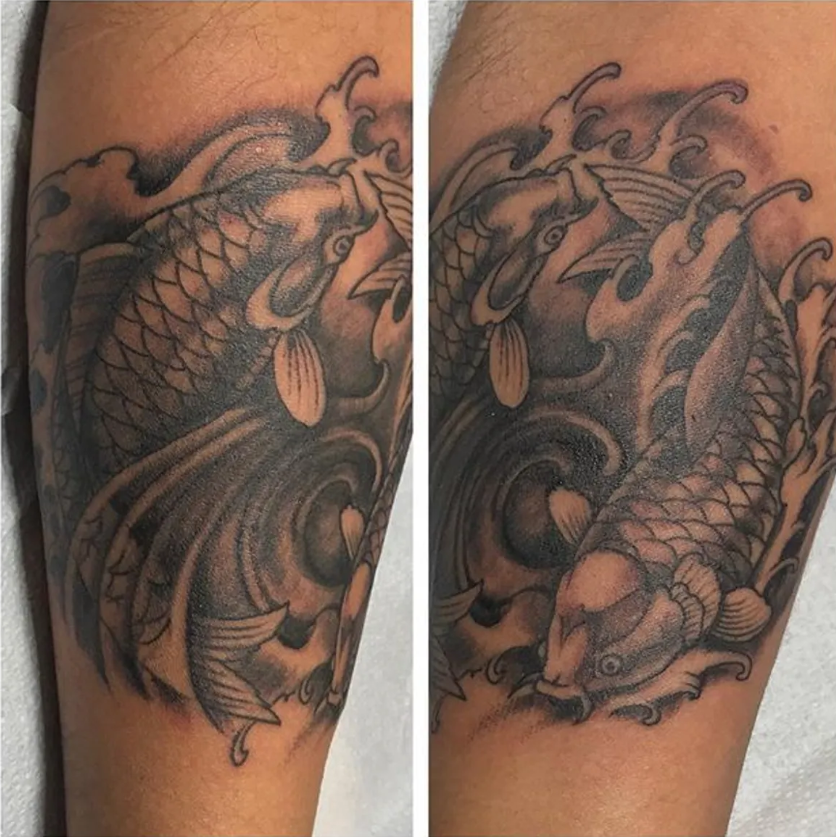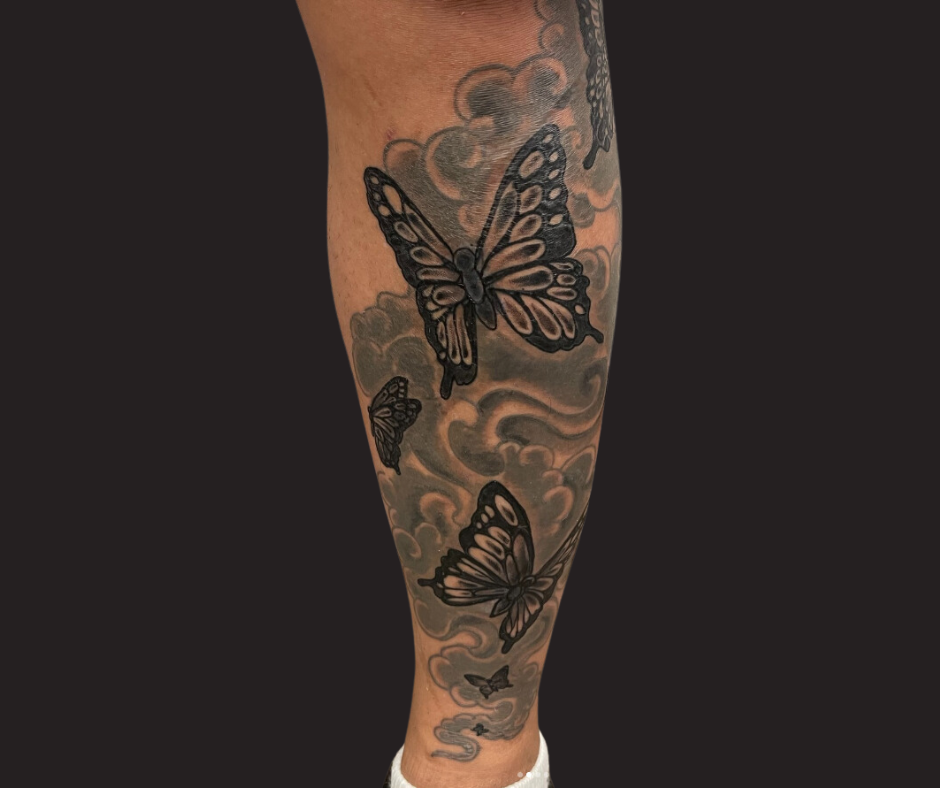The Symbolism in Skeleton Tattoos
As October begins and Halloween brings a focus on the macabre, it’s the perfect time to explore the symbolism of skeleton tattoos. Skeleton tattoos are not just visually striking; they carry deep meanings rooted in history and culture. Whether you’re inspired by their ancient significance or the personal message they convey, a skeleton tattoo offers a bold and meaningful way to express yourself.
Historical and Cultural Significance
Skeletons have been powerful symbols across many cultures for centuries. In art and rituals, they often represent the delicate balance between life and death. Whether serving as reminders of mortality, offering protection or symbolizing transformation, skeletons carry profound meanings. Let's explore how different cultures have used skeleton imagery in art to express these deep themes.
Ancient Cultures
In the ancient world, skeletons were deeply connected to the afterlife and the cycle of death and rebirth. For the Aztecs, skeletons and skulls played a key role in religious ceremonies. They believed life and death were intertwined, with death being a necessary step for renewal. Aztec rituals often used human skulls and skeleton imagery to honor the gods and mark important events like seasonal changes or victories in battle. For them, death wasn’t an end but a part of the ongoing cycle of life.
In Ancient Egypt, skeletons and mummification represented the soul's journey to the afterlife. Egyptians saw death as a transition to a new existence rather than a final end. Skeletons often appeared in their art alongside gods like Osiris, the god of death and rebirth, symbolizing the promise of eternal life. The carefully preserved skeletons of pharaohs were thought to guide their souls on this eternal journey.
Memento Mori
Memento Mori, a Latin phrase meaning "remember that you will die," was a key theme in European art during the Middle Ages and Renaissance. Artists used skeletons and skulls to remind viewers of life’s fleeting nature and the certainty of death. These powerful images encouraged people to reflect on mortality and live with intention, knowing that life is temporary.
In religious art, memento mori imagery was especially common, often used in Christian contexts where the focus was on the afterlife. Skeletons served as visual reminders to live virtuously, as death could arrive at any moment. Artists like Hans Holbein the Younger and Pieter Claesz incorporated skulls and skeletons into their work, often pairing them with symbols of wealth and beauty to highlight the contrast between material pleasures and the inevitability of death.
Dia de los Muertos
One of the most vibrant uses of skeleton imagery comes from the Mexican holiday Día de los Muertos (Day of the Dead). This celebration, rooted in both indigenous traditions and Catholicism, honors deceased loved ones and celebrates the cycle of life and death. Unlike many Western views, which often see death as something to fear, Día de los Muertos embraces it as a natural and essential part of life.
During the holiday, calaveras (skeletons and skulls) are decorated with bright colors, flowers and intricate designs. These joyful skeletons symbolize the continuation of the soul’s journey and the enduring bond between the living and the dead.
One of the most iconic figures of the holiday is La Catrina, a skeleton dressed in elegant clothing, representing both the acceptance of death and the celebration of life. Día de los Muertos tattoos are often colorful and elaborate, capturing the deep cultural respect for the dead and the joyous celebration of their memories.
Tibetan and Buddhist Traditions
In Tibetan Buddhism, skeletons and skulls hold deep symbolic meanings. Known as chitipati, these skeletal figures are often shown dancing, representing the impermanence of life and the need to embrace death as part of spiritual growth. The chitipati remind practitioners that worldly existence is temporary, encouraging them to let go of material attachments.
In addition to their role in teaching impermanence, these skeleton figures are also seen as protectors. They frequently appear in ritual dances and mandalas (spiritual symbols representing the universe), symbolizing that understanding death allows one to live with greater clarity and purpose. In Tibetan-inspired tattoos, skeleton imagery often reflects themes of spiritual awareness and acceptance of life’s fleeting nature.
Western Symbolism and the Medieval Danse Macabre
In medieval Europe, the concept of Danse Macabre (or Dance of Death) became a common theme in art and literature. It emerged during the Black Plague in the 14th century and depicted skeletons leading people from all social classes—kings, merchants, and peasants alike—in a procession toward death. The message was simple but profound: death comes for everyone, no matter their status or wealth.
This imagery became widely popular in both religious and secular art, serving as a stark reminder of life’s fragility and the fleeting nature of earthly power. In modern tattoo culture, the Danse Macabre often symbolizes the universal nature of death and can be seen as an acceptance of life’s unpredictability and the inevitability of change.
Symbolic Meanings of Skeleton Tattoos
Skeleton tattoos carry deep meanings. They can remind us of mortality, represent inner strength or symbolize transformation and rebirth. These designs are more than just art—they express powerful personal statements about life, death and resilience.
Mortality and Life's Transience
Throughout history, skeleton tattoos have served as a powerful reminder of life’s impermanence. They symbolize the certainty of death and encourage the wearer to appreciate the fleeting nature of existence. This deep, introspective meaning makes skeleton tattoos a striking statement about the human condition. For many, these tattoos act as a personal memento mori, reminding them to live each moment fully and approach the future without fear.
Resilience and Strength
Skeletons, stripped down to their bare essence, symbolize enduring strength and resilience. They represent what remains when everything else is gone, highlighting the inner strength that lies within each of us. Historically, warriors and soldiers associated skeleton imagery with invincibility, using it as a symbol of courage in the face of death. In modern tattoo culture, skeleton tattoos reflect the triumph of spirit over hardship, serving as a lasting symbol of inner strength and perseverance.
Rebirth and Transformation
Skeletons also represent rebirth and transformation. Just as life emerges from decay, skeleton tattoos can symbolize shedding the old self and embracing a new beginning. In alchemy, skeletons are seen as symbols of transformation, where death is not the end, but part of a process of renewal and enlightenment. This powerful imagery makes skeleton tattoos especially meaningful for those who have undergone significant life changes, serving as a marker of personal evolution and growth.
Protection and Guidance
In some cultures, skeletons are seen as protectors or spiritual guides. In Tibetan Buddhism, for example, dancing skeletons symbolize spiritual transformation and protection from worldly attachments. Similarly, in Mexican and Mesoamerican traditions, skeletons are viewed as guides to the afterlife, offering protection during the spiritual journey. As a tattoo, a skeleton can serve as a talisman, giving the wearer a sense of safety and direction—not only in the afterlife, but also in navigating life's uncertainties.
Popular Skeleton Tattoo Designs and Their Meanings
There are many ways to design a skeleton tattoo, each carrying its own meaning. Whether you choose a full skeleton, a single bone, or a Day of the Dead inspired design, your tattoo will tell a unique story. Below are some of the most popular designs and what they symbolize.
Full Skeleton
A full skeleton tattoo can be a bold statement about the wearer’s acceptance of mortality and the cycle of life and death. It symbolizes a deep connection to these universal truths and can be customized to reflect personal beliefs and experiences.
For some, a full skeleton serves as a memento mori—a reminder to live fully by embracing the impermanence of life. It can also reflect themes of rebirth and transformation, as the skeleton, being the last physical trace of the human form, represents what endures beyond death.
Skull Tattoos
Skull tattoos are perhaps the most iconic form of skeleton imagery. They can symbolize intelligence, mortality and even rebellion. Often used as visual shorthand for memento mori, skulls also carry meanings of strength, defiance and fearlessness—particularly in subcultures like punk or biker communities.
The meaning of a skull tattoo can vary depending on the design. For example, sugar skulls celebrate life and death, while minimalist or abstract skulls might represent self-awareness or a rejection of societal norms. The versatility of skull tattoos allows for endless personalization, whether you choose a realistic, neo-traditional or geometric style, making each piece unique to the wearer.
Skeleton Hands and Faces
Skeleton hands and faces are popular choices for tattoos, often depicted in various gestures or expressions. For example, a skeleton hand making a peace sign can symbolize a blend of mortality and tranquility—a reconciliation between the inevitability of death and the desire for peace. Similarly, a skeleton hand clasping a rose might represent beauty in transience or love that endures despite the passage of time.
Skeleton faces, often grinning or shown with playful expressions, offer a lighter approach to the theme of death, conveying humor or a carefree attitude toward mortality. These designs allow for creative expression and can be tailored to reflect personal meanings, making them adaptable across many tattoo styles.
Day of the Dead Skeletons
Day of the Dead skeleton tattoos are vibrant and festive, often adorned with flowers, candles and other decorations. These tattoos celebrate both life and death, honoring loved ones who have passed away. Inspired by the rich traditions of Día de los Muertos, these designs incorporate calaveras (skulls) and Catrinas, often depicted in colorful and intricate styles to express joy and reverence rather than fear or sorrow.
A Catrina tattoo, for example, might symbolize the celebration of life and the continuation of the soul, while also serving as a personal tribute to family or cultural heritage. These designs are highly customizable, often featuring symbols that hold personal significance, such as flowers, names or other mementos that honor those who have passed.
Personalizing Your Skeleton Tattoo
Personalizing your skeleton tattoo can make it even more meaningful and unique. From combining symbols to choosing the right style and placement, there are countless ways to tailor your design to reflect your personal journey or beliefs.
Combining Symbols
You can enhance the meaning of your skeleton tattoo by incorporating symbols that resonate with your personal experiences. For example, roses are often added to symbolize the beauty and fragility of life, while clocks represent the passage of time and remind us of life’s impermanence. Hourglasses blend naturally with skeleton designs, symbolizing the transient nature of existence.
For a message of transformation and rebirth, you could add butterflies or choose snakes to represent renewal. Each added symbol brings a new layer of meaning, allowing your tattoo to reflect not only mortality but also your own beliefs, aspirations and personal narrative. The key is to select elements that are deeply meaningful to you, creating a unique story within the art.
Stylistic Choices
The style of your skeleton tattoo plays a crucial role in how its symbolism is perceived. A traditional skeleton tattoo, with bold lines and limited color, might emphasize mortality and resilience in a timeless, straightforward way. In contrast, a neo-traditional style can incorporate vibrant colors and intricate details, giving a modern twist to the theme.
If you prefer a realistic style, the tattoo may take on a somber, introspective tone, highlighting anatomical details and offering a more literal interpretation of death and decay. Alternatively, a geometric style can bring a minimalist, abstract layer of meaning, focusing on symmetry and structure. Choosing the right style reflects your personal aesthetic and shapes how the tattoo’s message is interpreted by others.
Placement Considerations
Choosing the right placement for your skeleton tattoo is crucial to maximizing its visual impact and meaning. Larger areas like the back, chest or thigh can accommodate detailed designs, such as a full skeleton or a complex scene with multiple symbols. These areas provide ample space for intricate shading, fine details and a comprehensive visual narrative.
In contrast, smaller areas like the wrist, ankle or forearm are perfect for simpler yet powerful symbols, such as a skull or a skeleton hand. These placements offer the option to conceal or display the tattoo, depending on your preference.
Some people choose placements with personal significance—such as over the heart, to symbolize protection, or on the arm, to represent strength and endurance. Thoughtful placement enhances both the aesthetic and symbolic power of your tattoo.
Skeleton tattoos are more than just visually striking—they’re rich with symbolism and personal significance. Whether you’re drawn to their historical roots, deep meanings or stunning visual impact, a skeleton tattoo can be a powerful way to express yourself. As you consider your next tattoo, reflect on the layers of meaning behind skeleton imagery and how you can personalize it to create a piece that truly resonates with you.
Ready to begin your tattoo journey? Book a consultation with me at Iconic Tattoos for personalized advice and expert tattooing services. Visit Iconic Tattoos to schedule your appointment today!
And don’t forget to share your tattoo journey with us using hashtags #IconicTattoosVA, #FairfaxVA, and #WashingtonDC.
© 2024 Iconic Tattoos. Site created and maintained by Rank Rocket Creative Studios.


